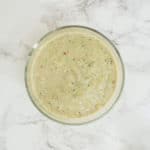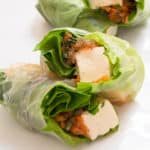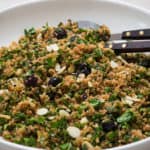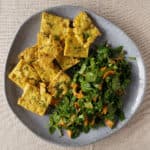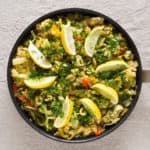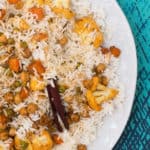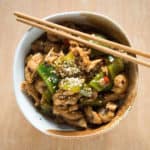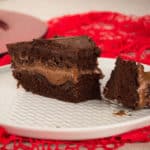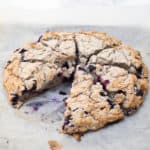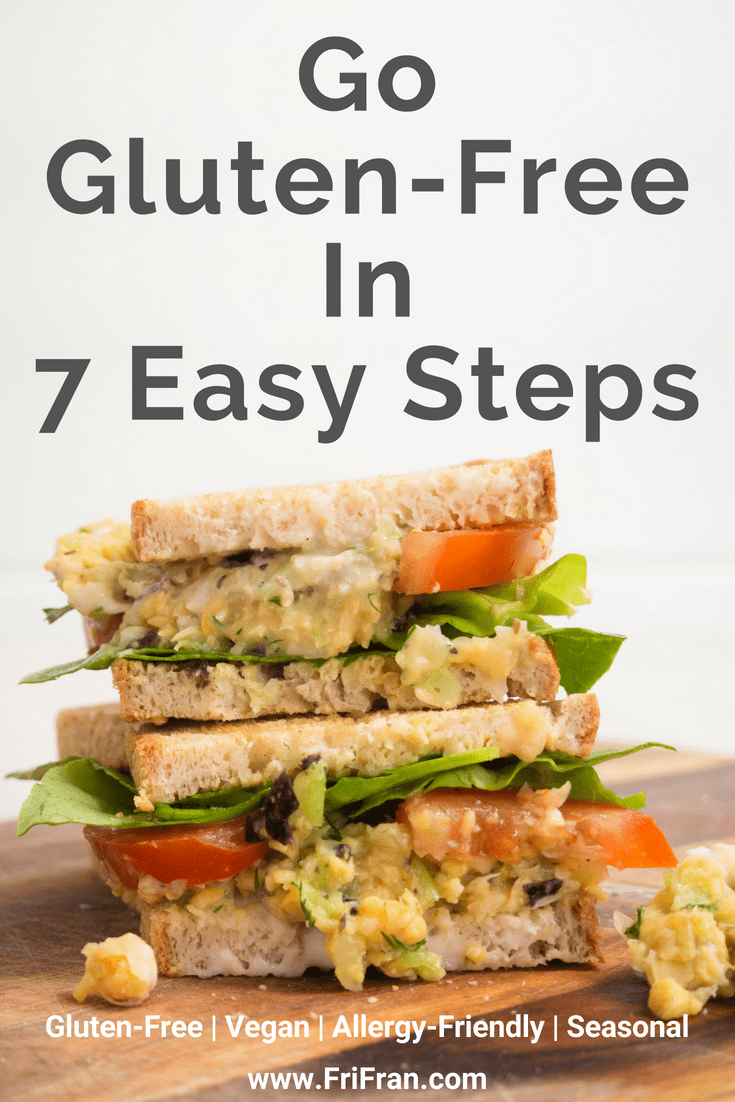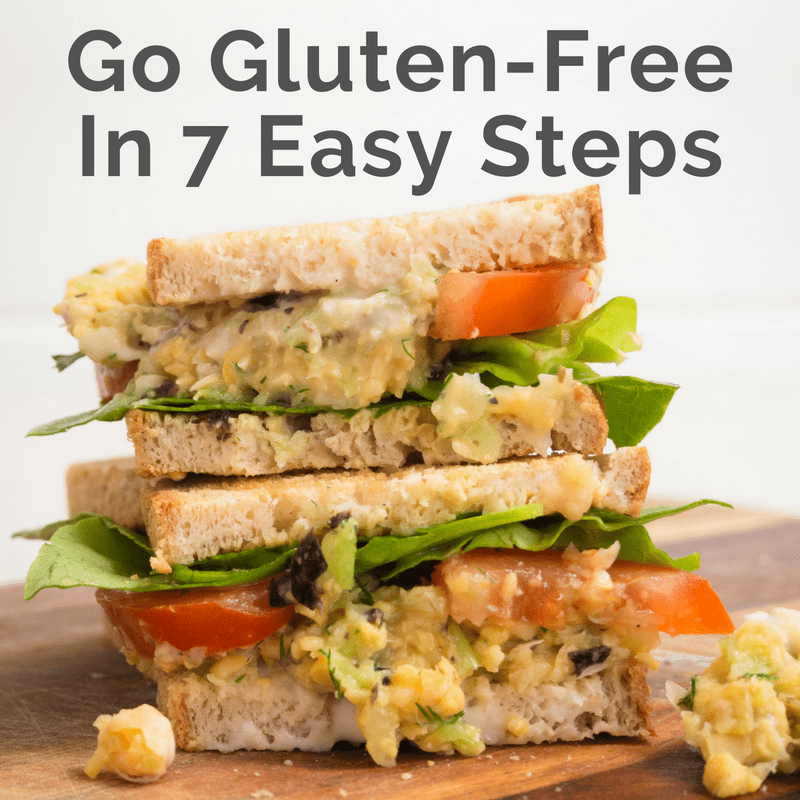
Being gluten-free (and vegan) can be a challenge!!! It’s really, really daunting. I know! I’ve been there. You don’t know where to start and it makes no sense!!! Here’s How To Go Gluten-Free In Seven Easy Steps.
How To Go Gluten-Free In Seven Easy Steps
First Things First
Before you Go Gluten-Free In Seven Easy Steps there are a few things to think about. Before you launch into a gluten-free lifestyle ponder these things:
- Do you REALLY need to go gluten-free? I ask this because unless you have coeliac (celiac) disease, a gluten intolerance, or a medical reason for cutting out gluten, it makes absolutely no sense to remove gluten from your life. Gluten isn’t ‘bad’ for you – unless you have a medical issue. Cutting out gluten doesn’t make you cool and if you really don’t need to remove gluten from your life, you’re just making things difficult (and potentially) expensive!
- Before you go gluten-free, start a food diary. For as long as possible before you go gluten-free and for several months (or as long as you can) after you go gluten-free. This way you should be able to spot a pattern in your symptoms and reactions to gluten. Particularly useful for discussions with your doctor(s). Click the button below to download a Food Diary template.
- Going gluten-free is not for the faint hearted – it will be challenging at first but once you get your head around it using these seven easy steps it will become second nature.
Are you ready to Go Gluten-Free In Seven Easy Steps? Read on!
How To Go Gluten-Free In Seven Easy Steps
As I’ve alluded to going gluten-free is not easy to do properly and takes long-term commitment. I can take some of that load off your shoulders with Go Gluten-Free In Seven Easy Steps.
Here’s the shortened version of How To Go Gluten-Free In Seven Easy Steps…
- Step 1. Education – learn the basics. What is gluten?
- Step 2. Preparation – inspire yourself with foods you love and that fit in with your lifestyle
- Step 3. Get Practical – get into good practice and keep cross contamination at a low risk
- Step 4. Shopping And Cooking – what to shop for and how to cooking easy recipes
- Step 5. Eating Out – spoil yourself and emergency eating
- Step 6. Hone Your Lists And Explore – refine and exapnd your lists, keep looking for inspiration
- Step 7. Go Back To Step 1. – review, refine, live your gluten-free life!!!
Read on for the detail and Go Gluten-Free In Seven Easy Steps!
Go Gluten-Free In Seven Easy Steps
Step 1. Education
Learn the basics. What is gluten?
And how do you avoid it?
Education is your friend. You can’t coast going gluten-free. This is a major lifestyle change.
The first thing to do is find out what the heck gluten is!!!!
I’m going to make it easy for you and tell you the basics.
Gluten is the general name for the proteins found in wheat, barley and rye.
In a bit more detail… Gluten is a composite of gliadin and glutelin, which is conjoined with starch in the endosperm of some grass-related grains. The prolamin and glutelin from constitute about 80% of the protein contained in wheat seed.
So, simply put you need to avoid wheat, barley and rye and all products made with these grains and their derivatives.
Gluten is found is LOTS of everyday products including bread, pasta, cakes, pastries, ready meals, beer… The list goes on… and on…
(and on…)
There are lots of ‘normal’ everyday foods and ingredients that you would not expect to contain gluten – but do. For example, some soya sauce, baking powder and breakfast cereal contains gluten.
Gluten gives a stretch and elasticity to dough and other baked goods, helping them to rise and to keep its shape. Gluten gives bread its distinctive taste and chewy texture.
One thing to watch out for is oats. Oats (unless they are gluten-free oats) contain gluten. This is because oats are processed in the same facilities as gluten-containing grains and heavily contaminated with gluten (all that white dust on oats is flour!). Gluten-free oats are milled or processed in gluten-free facilities. Oats are technically gluten-free however, some people have issues with the protein in oats (avenin) which is similar to gluten.
Go Gluten-Free In Seven Easy Steps
Step 2. Preparation
Inspire yourself with foods you love and that fit in with your lifestyle.
So! You know what gluten is… Now what?
This is the fun bit. You decide how you want to live your gluten-free life and then make the plans for your gluten-free life.
Questions to ask yourself to get started…
What sort of food do you like to eat and cook?
Think about the kind of foods you like cook and to eat and if it’s possible to make them gluten-free (in 90% of cases it’s easy!). Easy swaps include using gluten-free pasta (supermarket own brands are really good!) in place of ordinary pasta in your favourite pasta dish… Sub gluten-free pizza bases for your favourite pizza.
Look for inspiration on Pinterest, on websites (besides FriFran!) and in magazines that share the type of recipes you’d like to make.
Save them somewhere or make a folder with recipes you want to make.
There are a number of websites that share easy, delicious looking gluten-free (and vegan recipes) that might inspire you. Check out the websites below.
Minimalist Baker – plant-based recipes requiring 10 ingredients or less, 1 bowl, or 30 minutes or less to prepare – 90% of recipes are gluten-free.
The Colorful Kitchen – plant-based recipes that are colorful, not complicated – 90% gluten-free
Vegan Richa – plant based recipes inspired by Indian upbringing – lots of gluten-free recipes and options.
Beaming Baker – vegan, gluten free, dairy free and paleo recipes.
The Big Man’s World – gluten-free, vegan sweet treats.
Do you need to take packed lunches to work or school?
You can make sandwiches but they get boring and gluten-free bread is usually not nice (unless it’s toasted)!!!
Think about what else you can take as a packed lunch: gluten-free pasta salad, summer rolls, houmous with veggies, soup, left-overs from the previous nights dinner (if you have access to a microwave).
How often will you need to buy lunches, snack dinners and what shops or stores will they be from?
If you travel a lot and it’s not practical to take packed lunches or you get caught out you’ll need to know where you can buy food you can eat. Supermarkets often have something you can cobble together (gluten-free crackers, salad, houmous etc.) but some cafes, chains and shops sell gluten-free ready-to-go food too! Do a bit of research to find out where local to you sells food you can eat.
Will you play meals by ear or do you want to plan out what you eat each week?
What do you do now? Does it work for you? Will it work for you gluten-free?
Personally, I plan very little. I decide what I fancy each day and cook that. That might be a bit too daunting at first and a meal planner might be useful. Meal planners are fab – you can plan out what you will eat each day for the next week (or month!) and prepare your shopping list. I have a Meal Planning and Shopping List template you can download. Just click the button below and get planning
Meal preparation is one step on from meal planning. If you have a big enough freezer you can make a weeks (or longer!) meals at once and store in the freezer. Some people meal prep on a Sunday for the whole week. If it works for you, do it!
Go Gluten-Free In Seven Easy Steps
Step 3. Get Practical
Get into good practice and keep cross contamination at a low risk.
Is it just you, one member of your family or your whole family that will be gluten-free?
If it’s the whole family you can start by clearing out all the gluten-containing goods from your cupboards, fridge and freezer. Donate what you can!
If it’s just you or one member of your family going gluten-free, clear a cupboard that will be dedicated to gluten-free foods.
Make sure everyone knows this is the gluten-free cupboard.
Get cleaning!!!
If it’s just one cupboard or the whole kitchen… Thoroughly clean EVERYTHING. It’s really important you clean thoroughly so all traces of gluten are gone. A vacuum cleaner (in your cupboards) can be useful here!
Cross-Contamination
If your entire home is not totally gluten-free you should be very careful of cross-contamination at home.
If you have coeliac disease or an allergy or sensitivity to gluten or dairy, cross-contamination is a serious concern.
Cross-contamination is easy to do: spreading margarine contaminated with ‘normal’ breadcrumbs on your gluten-free toast; using the same toaster for gluten-free and ‘normal’ bread; stirring a gluten-free vegan dish with a spoon that has been stirring a dairy and wheat flour sauce.
Even small amounts of gluten can badly affect those sensitive to gluten.
If you live in a household that is not totally gluten-free (and vegan), the simple points below will help prevent cross-contamination in the kitchen:
- Have a separate cupboard (and fridge shelf and freezer compartment) for gluten-free products and ingredients
- If you have a mixed fridge/ freezer, store everything (gluten and non-gluten) in boxes or bags to reduce the risk of cross-contamination
- Consider having separate cooking pots and utensils – especially porous items like wooden chopping boards and spoons
- Keep ‘gluten-free’ pots and utensils separately
- Always use separate utensils and knives to prepare gluten-free food
- Wash everything well and clean surfaces before cooking and eating.
Many ready made products (that do not contain gluten, dairy or eggs) carry a warning of cross-contamination. This is usually because the products are made in the same facility as products containing gluten, eggs, milk and other allergens. This labelling enables you to make a decision regarding your own health and any potential reaction to such products. Products also change their ingredients (surprisingly frequently). Don’t assume that the product you buy every week has the same ingredients from one week to the next.
If you accidentally eat gluten and feel unwell. Ride it out and look after yourself. There is no magic wand that will make you feel better. Drink and eat well and you should start to feel better. Despite all the advice (peppermint tea etc.) on the internet nothing will make you feel better or make the symptoms pass any quicker. Cross-contamination is horrible!
Go Gluten-Free In Seven Easy Steps
Step 4. Shopping And Cooking
What to shop for and how to cooking easy recipes
Shopping gluten-free can be challenging at first. You will need to read the ingredients on EVERYTHING you buy – look out for ingredients in bold (allergens including gluten) in the UK and EU.
In the UK and US, if a product has been tested and it contains less than 20 parts per million (20 ppm) it can be labelled ‘gluten-free’.
Similarly in Canada to be labelled ‘gluten-free’ products must contain less than 20 ppm BUT no amount of gluten must have been intentionally added, even if it makes up only a small portion of the final food.
In Australia and New Zealand the rules are much more strict: foods labelled as ‘gluten-free’ must not contain any detectable gluten; and no oats or their products; or cereals containing gluten that have used malt or their products. Oats are not gluten-free in Australia and New Zealand!
Not all gluten-free foods will be labelled as such (it costs money to carry out tests) but the information on packaging should tell you all you need to know.
Off The Shelf Products
Off-the-shelf products, ready meals and the likes make you life easier but beware!!! Some things you think should be gluten-free may not be. It may be surprising, but a large amount of ‘filler’ that is not gluten-free (or vegan) is used in the most simple, pre-prepared food. For example, wheat flour is often used as a thickener or filler in many prepared sauces and ready-meals, lots of brands of flavoured crisps (chips) contain gluten and milk and most gluten-free bread contains egg. Gluten, diary and eggs are ingredients in many, many off-the-shelf products and ready meals.
However, there are lost of gluten-free off-the-shelf products available. Things such as gluten-free (vegan) bread, pasta and ready-meals are available. There are a few brands of gluten-free, vegan bread available these include Just and BFree. Just is the best ‘long-life’ bread I’ve found so far. In the UK Sainsburys produces a fresh baked gluten-free bread. The white bread is vegan too (the ‘farmhouse’ contains honey). Not all Sainsburys bakeries sell this bread (which is manufactured in a gluten-free bakery and wrapped before being transported and baked in the wrapping in-house) but you can find a list here.
Don’t assume if something is gluten-free it is vegan (or even vegetarian).
Don’t be surprised that gluten-free, vegan products are often a) expensive b) taste like crap c) are full of sugar.
Just because it is gluten-free, it doesn’t mean it’s healthy – processed food tends to be full of fat and sugar regardless of whether it is gluten-free and vegan.
Off-the-shelf products are an easy introduction to being gluten-free and will support you whilst you find your ‘gluten-free feet’. Gluten-free pasta is pretty good and I eat is a couple of times a month. Personally I tend to avoid gluten-free (vegan) ready-meals, they are often just not very nice. Or downright disgusting. The are also very expensive!
Cook The Food You Like In The Time You Have
Cooking for yourself is the way to go. You will know exactly what went in your food, you reduced the risk of cross-contamination or errors reading ingredients and you saved money on crappy tasting ready meals.
You can make the sort of food you like in the time you have. You can make a great meal, for four, in well under 30 minutes. Easily!
To do that you’ll need to know how to navigate the shops and know what to buy. You can download a Store Cupboard Essentials Cheat Sheet by clicking the button below.
One you get some basics under your belt you can start to expand your food base to include ingredients you aren’t currently familiar with. Grains like millet, quinoa and buckwheat (not related to wheat, it’s a grass) a fabulous and work great as sides and in baking. Your tastes will adjust quickly to new food and new ways of cooking.
Recipe Ideas
If you’re new to gluten-free it can be daunting. Here are a few ideas for breakfast, dinners and desserts to get you cooking gluten-free.
Breakfast can be tricky for everyone. Raspberry and Hazelnut Overnight Oats takes the stress out of making breakfast – you do the prep the night before in less than five minutes and in the morning your breakfast is ready to go. Out of season I use frozen raspberries. If you don’t eat oats you can sub the oats for the grain of your choice.
I often don’t like cereals you can buy. They tend to be too ‘cardboardy’ and/ or too sweet. So I make my own Crunchy Cranberry and Cinnamon Granola. I make HUGE batches as a) it lasts quite a while but b) gets eaten very quickly.
If you like smoothies you’ll love Apple And Greens Super Smoothie. It’s refreshing, nutritious and delicious and again you can prep it the night before.
Lunch is often tricky at work or school so if you can’t take in left-overs or don’t have access to a microwave Tofu, Radish And White Miso Summer Rolls are a great idea.
If you fancy a delicious salad, Fragrant, Almond, Blueberry And Quinoa Salad is perfect.
I’m also quite a fan of Panelle With Spinach, Carrot, Caper and Lemon Salad for lunch. So delicious. I tend to make huge batches of panelle, it’s so good cold.
The last thing you want to do after a long day at work is spend hours in the kitchen. And with these recipes you don’t need to!
Summer Vegetable Paella is so easy and really, really delicious. I love this with a simple green salad. Yum!
Who doesn’t love a curry night? Chana And Gobi Biryani take a little bit longer to cook but most of it is hands off. This is a great Saturday night dish served with some poppadoms and chutney.
One of my all-time favourite dishes is Tofu and Green Peppers in Black Bean Sauce served with Plain Rice. I could eat this until it’s coming out of my ears. So easy and so delicious.
Dessert is often the favourite part of my meal… I love chocolate and well, other things…
Gluten-Free, Vegan Triple Chocolate Cake is my go-to chocolate cake recipe. I LOVE it. Easy to make, light, moist and delicious. I tend to eat quite a lot of this at Christmas!
Baking is one of my favourite things to do and Gluten-Free, Vegan Blueberry Scones are super easy, super quick and really, really good.
Sweet Potato Doughnuts are also pretty popular. They’re a little bit more difficult (and fried!) but well worth it!
Go Gluten-Free In Seven Easy Steps
Step 5. Eating Out
Spoil yourself and emergency eating.
Eating out is a treat and often a great thing to do with family and friends. However, eating out can seem challenging!!! But it doesn’t need to be. The world is becoming more and more aware of diseases and allergies and many countries have strict legislation that requires those selling food to know and share exactly what is in their food. Many places annotate their menus to indicate gluten-free and vegan options and are aware of the issues of cross-contamination.
So, how do you find ‘safe’ restaurants? The world wide web is your friend here. Wherever you are there will (almost undoubtably) be somewhere you can safely eat, whether that is a chain restaurant or an independent cafe. Personally I use Happy Cow to find places to eat where I am or where I’m visiting that serve vegan food – then I check out the restaurants online. Most places that are aware of vegan are also clued up enough to serve gluten-free. I check out their menus, gluten-free options and their reviews. If I am happy with my research and the reviews I add them to my list of places to visit. Recommendations from online groups are also useful.
Many chain cafes or restaurants are good for gluten-free, they want to appeal to as wide-a-group as possible and they have a reputation to maintain. obviously there are issues where places get it wrong, very wrong, but on the whole chains are pretty good.
If you haven’t been able to do any research and happen to be in a cafe or restaurant you’re not familiar with you can ask few questions to gauge if eating there is ‘safe’ for you:
- Ask if they have a gluten-free menu or gluten-free options
- Ask if they use the same fryer or pans without thorough washing for gluten and gluten-free foods (if they do the risk of cross-contamination is high).
If the answer to the first question is a blank look or they tell you they don’t it’s obvious you won’t have much luck.
If you get a menu that’s annotated with gluten-free options and they look good to you it’s worth asking the second question.
Many cafes and restaurants have great menus that are well annotated. Many will have disclaimers about not being able to guarantee no cross-contamination. This is pretty normal even where standards are very high.
If you feel uncomfortable with responses or you get the impression the chef doesn’t understand gluten-free it might not be worth the risk. For example, I ate out at a very expensive hotel restaurant. The special menu looked great, one of the dishes came with a dipping sauce that contained soya sauce. I asked if it was gluten-free soya sauce and the answer came back ‘no’. I pointed out the dish would not be gluten-free but they said it was only a ‘little bit of gluten’! Alarm bells!!! I chose something else that I knew would be safe. I went back to the restaurant the following year and the same dish was on the menu that wasn’t gluten-free. They had either not paid any attention to what I said or they had ignored what I said. Either way the staff and/ or chef did not take gluten-free seriously. I haven’t been back.
Draw up a list of places near where you live (or where you’re going on a visit or on holiday/ vacation) where you think you can eat safely and look like the sort of places you want to eat.
Go Gluten-Free In Seven Easy Steps
Step 6. Hone Your Lists And Explore
Refine and expand your lists, keep looking for inspiration.
You will by now have quite a gluten-free repertoire: the food you like to shop for, eat and make and restaurants you like to visit.
You’ll be gaining more and more confidence in the food you make and share.
You’ll really get a feel for how you live your gluten-free life.
Invite friends round to dinner to taste your amazing food.
Go Gluten-Free In Seven Easy Steps
Step 7. Go Back To Step 1.
Review, refine, live your gluten-free life!!!
You will make mistakes. It is almost guaranteed. This doesn’t mean you failed or you should give up.
You’re still learning. It is a steep learning curve. Keep on learning, don’t give up. I’m still learning!
After a few weeks of being gluten-free you will have learned so much. It’s easy to forget how much you will have picked up.
You will keep learning, no one knows it all!
Every so often (every few weeks in the beginning) take a few minutes to go back to the beginning of Go Gluten-Free In Seven Easy Steps again…
- Step 1. Education – what’s new in the gluten-free world? Get back to basics again
- Step 2. Preparation – inspire yourself again! Go back to the foods you love and find more and more interesting recipes and ideas
- Step 3. Get Practical – have you fallen in to bad habits? Is your shared gluten/ gluten-free home getting a bit… lax? Remind yourself of good practice and keep cross contamination at a low risk
- Step 4. Shopping And Cooking – refine your lists. If you find you have a cupboard full of gram flour and are never going to use it, take it off your lists and use it up
- Step 5. Eating Out – find new places to eat out and explore. Be more confident and more adventurous
- Step 6. Hone Your Lists And Explore – refine your lists, keep them all in one place. Find people and places on the internet that inspire you and have ideas you can put into practice
- Step 7. Go Back To Step 1. – review, refine, live your gluten-free life!!!
Fantastic!!! You are ready to Go Gluten-Free In Seven Easy Steps
What Is Your Tip To Share to Go Gluten-Free In Seven Easy Steps?
What have you learned that helped you Go Gluten-Free In Seven Easy Steps? Drop a comment below or ping me on social media! 🙂


